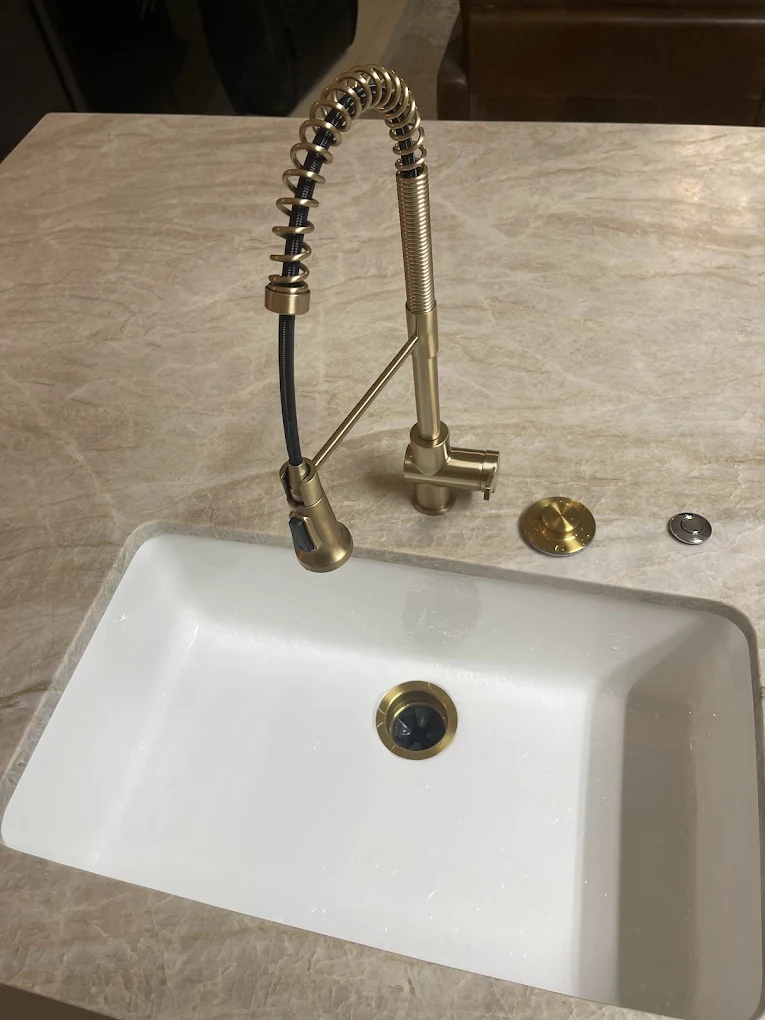Most low-pressure issues in Midlothian stem from simple causes — clogged faucet aerators and showerheads, partially closed shut-off valves, failing pressure regulators, or aging, corroded pipes — and you can methodically check each to restore strong flow. This guide shows you how to identify the likely culprit, perform straightforward fixes or know when to call a licensed plumber so your showers, irrigation, and household fixtures return to reliable performance.
Key Takeaways:
- Start with easy fixes: clean faucet aerators and showerheads to remove mineral buildup that often restricts flow.
- Check shut-off valves and the pressure regulator—ensure valves are fully open and have a pro adjust or replace a failing regulator to restore house-wide pressure.
- Widespread or persistent low pressure can signal corroded or scaled pipes; get a licensed plumber to inspect and recommend repair or replacement.
Common Causes of Low Water Pressure
You can trace most pressure problems to a handful of sources: clogged fixtures from mineral-rich municipal or well water, partially closed shut-off valves, a misadjusted pressure regulator (homes typically perform best between 40–60 psi), or aging, corroded pipes that narrow flow over time. Start by isolating whether low pressure affects one fixture or the whole house — that tells you if the issue is local (aerator, showerhead, valve) or systemic (regulator, pipes).
Faucet Aerator Clogs
Your faucet’s aerator screen traps sediment and calcium deposits, often reducing flow to a trickle. Unscrew the aerator with a cloth-wrapped pliers, inspect the mesh, then soak parts in white vinegar for 30–60 minutes and scrub with an old toothbrush. If flow doesn’t improve, replace the aerator — common bathroom sizes and flow rates range from 1.0–2.2 gpm — which is a cheap, fast fix you can do yourself.
Showerhead Buildup
Mineral scale and trapped sediment in shower nozzles frequently cut flow and alter spray patterns; federal rules cap showerhead flow at 2.5 gpm, so any restriction below that often means clogging. Try removing the head and soaking it in a vinegar solution for several hours, or use a needle to clear individual nozzles; if your shower still underperforms compared to other fixtures, replacement may be the simplest route.
For stubborn scale, detach the showerhead and soak it in a 1:1 white vinegar–water mix for 4–12 hours—metal heads tolerate longer soaks than some plastics. After soaking, run water through the ports, use a soft brush or a thin wire to clear blocked nozzles, and test flow against a kitchen sink (tell-tale sign: sink strong, shower weak means the head is the culprit). If corrosion or internal damage shows, swapping to a new 2.0–2.5 gpm model restores performance and efficiency.
Issues with Shut-Off Valves
How Valve Problems Lower Your Pressure
You might have a partially closed or corroded shut-off valve restricting flow: many Santa Maria homes use multi-turn stop valves under sinks and at the meter that seize after years of mineral buildup. Typical household pressure is 40–60 psi; a valve only half-open can cut flow roughly 50%, so a 2.5 gpm shower can feel like 1.25 gpm. Inspect the main meter valve and fixture shut-offs—fully open stiff valves or swap them for quarter-turn ball valves to restore normal flow.
Problems with Pressure Regulators
How to spot and test regulator failure
A failing pressure regulator, common on Santa Maria homes tied to the municipal system, will lower pressure at every faucet; regulators are typically set to 45–60 psi, and readings under 40 psi at an outdoor spigot often indicate a bad PRV. You can attach a pressure gauge to a hose bib to check; regulators usually last 10–15 years. If you see erratic pressure swings when appliances run or the regulator is old, replace or have a pro adjust it to restore steady flow.
Aging or Corroded Pipes
In Santa Maria homes built before the 1960s, galvanized steel and early iron lines often corrode internally; after 40–60 years mineral scale and rust can reduce the effective diameter by as much as 50%, causing widespread low flow and discolored water at multiple fixtures. You’ll notice a weak shower and brown-tinted water when demand rises. Temporary flushes might help, but sectional repipe or switching to copper/PEX is typically required to restore your water pressure.
Additional Considerations
System-Wide Factors
Inspect peak-use events—sprinkler zones (often 5–10 gpm per zone) and laundry cycles can drop your house pressure during 6–9 a.m. and 6–9 p.m.; use a hose bib pressure gauge to check your outdoor spigot, since readings under 40 psi signal a problem while regulators are usually set to 50–60 psi. You should also review recent utility notices for main repairs and verify the PRV—one Santa Maria homeowner saw pressure jump from 25 to 55 psi after a simple regulator adjustment.
DIY Solutions for Water Pressure Restoration
Quick DIY Steps
Start by removing faucet aerators and showerheads, soaking screens in white vinegar for 30–60 minutes to dissolve calcium; clean with a toothbrush and reassemble. You should check under-sink and main shut-off valves are fully open, then use a hose-bib pressure gauge to measure supply—Santa Maria municipal systems typically deliver 50–70 psi; readings under 45 psi point to regulator or supply problems. Flush the system by opening the main for 2–3 minutes. If scale persists inside older pipes, a household descaler can help temporarily, but widespread corrosion usually needs a pro.
Summing up
Drawing together, you can diagnose and often fix low water pressure in Midlothian by checking aerators and showerheads for clogs, verifying shut‑off valves and the pressure regulator, and assessing pipe condition; if these steps don’t restore your flow, consult a licensed plumber to evaluate pressure issues and recommend repairs or replacements to protect your system.

